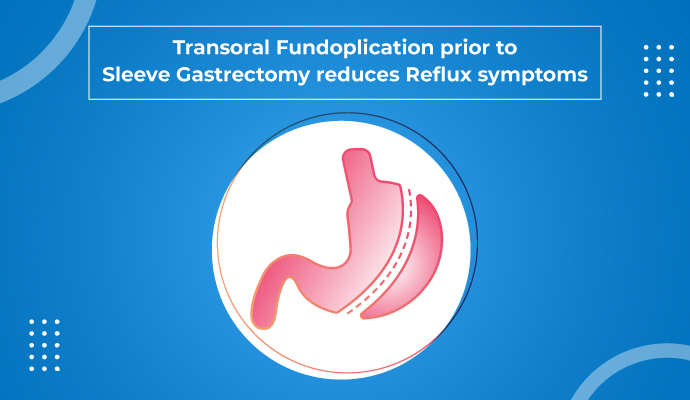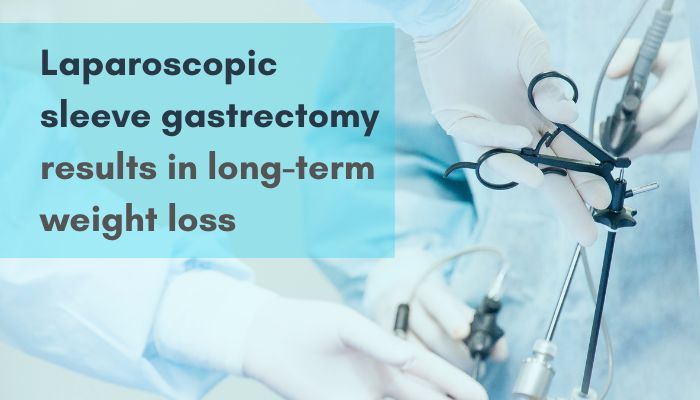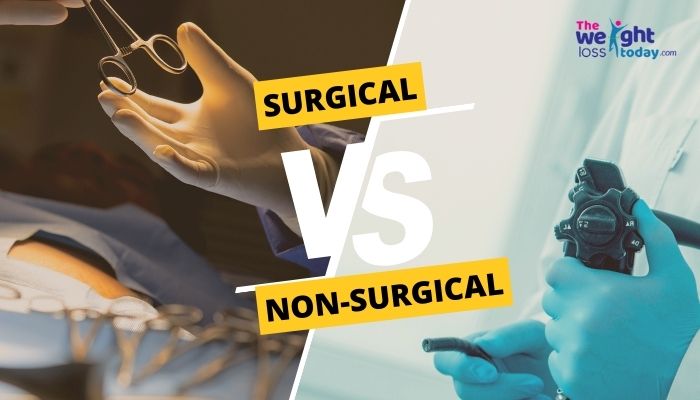
Sleep apnea and how it is associated with Obesity
Sleep apnea refers to a condition in which
58,941 total views, 64 views today
Home » Sleeve gastrectomy
Obesity is a complex, chronic disease which has an adverse effect on health. It is associated with high blood pressure, cardiovascular diseases, gall stones and other chronic illnesses.
Though the mainstay for obesity management is lifestyle modifications, some people fail to lose weight or prevent the lost weight from coming back, through only lifestyle modifications. For these people, bariatric surgery may become the savior. Bariatric surgeries have long-lasting and a significant impact on weight loss and have been practiced by surgeons worldwide. These surgeries promote weight loss by restricting food intake or by altering the digestive and absorptive process. Sleeve gastrectomy is one among the many types of bariatric surgeries.
Sleeve gastrectomy, also called as vertical sleeve gastrectomy, is a laparoscopic surgical procedure which permanently reduces the size of your stomach to help with weight loss.
During sleeve gastrectomy, the stomach is permanently reduced to 15 – 25% of its original size leaving a tube-shaped stomach about the size and shape of a banana. The resultant small-size stomach limits the amount of food that can be consumed at one time and thus causes weight loss. In addition, removing a portion of the stomach also reduces the level of hormone called ghrelin, which is commonly referred as the “hunger stimulating hormone.” Thus, sleeve gastrectomy may also cause a decrease in appetite.
This procedure is known as a restrictive operation as it restricts the amount of food and water intake. Many of the obesity-related comorbidities like diabetes, hypertension, obstructive sleep apnea and abnormal cholesterol levels are improved or cured after sleeve gastrectomy.
Sleeve gastrectomy surgery is recommended for those patients who:
Once your surgeon recommends sleeve gastrectomy surgery as the best method to manage obesity, certain measures must be followed before undergoing surgery to improve the results and avoid complications related to the surgery. The pre-procedure measures include:
A complete physical examination is performed to make sure that you are healthy enough to undergo the surgery. Any indications of infections or diseases of heart, lungs or uncontrolled diabetes may warrant a postponement of the surgery.
In addition to the general medical examination, diagnostic tests like blood and urine tests, gallbladder ultrasound, an electrocardiogram (EKG), and chest x-rays, are done to get baseline values of important clinical parameters.
You may be advised to stop taking some medicines which may interfere with the surgical procedure. Drugs like aspirin, ibuprofen, vitamin E, warfarin etc, are often discontinued one week prior to surgery to prevent the risk of bleeding during the surgery.
If you have a habit of smoking or using tobacco products, you may be advised to stop it before your surgery as smoking can adversely affect the healing process and surgical outcomes.
If you have a habit of smoking or using tobacco products, you may be advised to stop it before your surgery as smoking can adversely affect the healing process and surgical outcomes.
Social and home planning
You may need to make necessary arrangements prior to the surgery, such as to have someone to drive you back home and to assist you at home during the recovery period.
Education class
About 2 weeks prior to the procedure you will be asked to attend several classes. The classes focus on providing basic understanding and knowledge about the procedure, what you should expect afterwards, and risks and complications associated with weight-loss surgery. The classes also encourage you to commit to follow a healthy lifestyle after surgery.
Sleeve gastrectomy usually requires a hospital stay and you are required to get admitted on the day of your surgery. The anesthesia team will evaluate your health status and will check whether you are allergic to any anesthetic medications. On the operation table, a general anesthesia is administered to put you to sleep. The surgery is usually performed laparoscopically, which involves inserting small instruments through multiple small incisions on the upper abdomen.
The general steps involved in a sleeve gastrectomy surgery are as follows:
You will be moved to the recovery room after the surgery and will be monitored until you recover from anesthesia. Once you wake up, you will be taken to your hospital room. In most cases, you will be admitted in the hospital for one or two nights.
Hospital care:
Usually on the first day after the procedure, a post-operative swallow test is done, which is an X-ray test to check if there are any leaks or blockages. Until this test is completed, intravenous (IV) fluids are administered to ensure that you have enough fluid in your body and are not dehydrated. Along with IV fluids, antibiotics as well as pain medication is also administered. Once the results of your swallow test are known, a liquid diet followed by soft diet can be started.
At home:
Before discharge, a post-operative diet plan is provided to follow for the weeks after surgery. You will be instructed to eat slowly, chew thoroughly, and stop eating when you stop feeling hungry. The dietary plan includes:
Take multi-vitamin and B complex medications as prescribed, as the weight loss surgery affects the way body absorbs these nutrients.
In addition to the dietary instructions, you will also be instructed to:
Sleeve gastrectomy offers rapid and effective weight loss compared to other bariatric surgeries. Depending on their pre-operative weight, one can expect 40% to 70% loss of their excess body weight in the first year after surgery. In addition to weight loss, this procedure may also improve other conditions related to being overweight like heart disease, high blood pressure, type 2 diabetes, high cholesterol levels, obstructive sleep apnea, etc. The surgery can also improve your quality of life and the ability to perform routine daily activities.
Sleeve gastrectomy is one of the most commonly performed bariatric procedures to manage obesity.
Weight loss following sleeve gastrectomy surgery will vary from person to person. One may keep losing weight for up to 2 to 3 years after the procedure. One will start losing weight from day one after the procedure. This surgery alone is not a solution to losing weight. Perfect body weight and BMI is an end result of weight loss surgery together with regular exercise and healthy diet as directed by the physician.

Sleep apnea refers to a condition in which
58,941 total views, 64 views today

Since the beginning of 20th century, the overall
58,918 total views, 64 views today

New year is the time for new beginnings.
59,618 total views, 64 views today

Weight loss can be tricky business, as it
59,489 total views, 64 views today

According to a recent study, weight loss through
60,388 total views, 64 views today

According to a recent study, preoperative very low
60,389 total views, 64 views today

A recent study conducted on GERD (Gastroesophageal Reflux
60,392 total views, 63 views today

A recent study done to examine the long-term
59,274 total views, 63 views today

Overweight and obesity is a major health concern
29,559 total views, 47 views today

A recent study published in the Journal of
28,749 total views, 47 views today

The findings from a recent study, published in
28,990 total views, 47 views today

The findings of a recent study, published in
29,390 total views, 47 views today